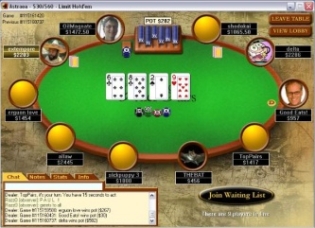
During a recent session, a couple of situations presented themselves that struck me as intriguing, not because they were unusual, but because they were fundamentally alike and yet extremely different.
The two situations came up in tournaments I was playing. In the first, we were in the mid-stages of a sit and go and I was already pretty short-stacked. I had just 700 chips and, to make matters worse, I had to put in 150 before the cards were dealt since I was in the big blind. The action folded to the button, who happened to have a healthy stack of 2,500 chips and, of course, he raised. It was just a min-raise, though, which gave me a chance to make a move when the small blind folded.
I had a decent hand, Q-J, but rather than just push like I frequently do when I’m short-stacked, I called.
It may seem like an odd play, putting in another 150 chips and leaving myself with just 400, but there’s a method to the madness. We know there’s a good chance my opponent has nothing and was just raising to bully the blinds, so I could very well have the best hand. Considering the size of his stack and the chips he already committed, he is almost guaranteed to call if I push pre-flop, and that might not be a bad thing for me.
If he doesn’t have an Ace, King, or pair, I’m in solid shape. But the key to this play is that I am planning on going all-in after the flop no matter what falls anyway. And since I am acting first, he has to react. There’s a very good chance that he’ll call my all-in post-flop, so in that case, the result would be no different than if I had pushed pre-flop.
But now, there is one other possibility: he folds. If he misses the flop, he may just decide that it isn’t worth risking even 400 chips and concede the pot. It’s probably a long shot, but it’s still one more chance to win the pot than if I had just pushed pre-flop.
What’s important to remember here is that this works best when you’re out of position since, as discussed above, you get to make the first move and force your opponent to react. Additionally, it’s a good idea to do this with a hand with which you may have pushed pre-flop anyway, as there is a strong chance you’re going to get called. As it turned out, my opponent ended up calling with a worse hand, caught a card on the turn, and knocked me out.
In the other situation, I was again in the big blind in a sit and go and again facing a raise from the button, but the roles were a bit different. This time, it was early in the tournament, so nobody was desperate, and now I was the one with a big stack, about 2,100 chips.
The button was slightly below the starting stack after playing a somewhat erratic style, sitting at 1,400 chips. When raised my 40-chip big blind to 400, I was suspicious. It seemed like an awfully big raise to make with a legit hand. Here’s the interesting part: I actually had a note on him from about a month prior that said, “Tends to over-raise with marginal hands or junk.”
I flat called him after the small blind folded with every intention of moving all-in on the flop. I didn’t care what my hole cards were and didn’t care what the flop brought. Similar to the previous hand, it was unlikely my opponent had much of anything and it was also unlikely that he hit the flop.
Had I moved all-in pre-flop, there was a good chance my opponent would have called, as he was now staring at a double-up, especially because he may have felt that I was trying to play back at him. With five community cards to come, it could have been worth the risk to him. By making my move after the flop, I was taking the chance that he missed and would fold. Plus, my pre-flop call would make him think that I had something worth playing, so even if he hit some small piece of the flop, he could very well hesitate, thinking I still had a better hand.
Again, this can work because you’re out of position and force the other player to react. Additionally, you want to make sure he raised enough pre-flop to make the re-steal worth it, but not so much that he’s pot committed and will insta-call you since, this time, you’re making the move with any two cards.
I won’t leave you hanging, so I’ll let you know that I had 9-4 suited and, after I shoved on a K-Q-3 flop, my opponent folded. To my surprise, he actually showed me A-6. So, even though he had an overcard, he didn’t want to risk that I had either caught something on the flop or already had him beat with a pair before the flop.























